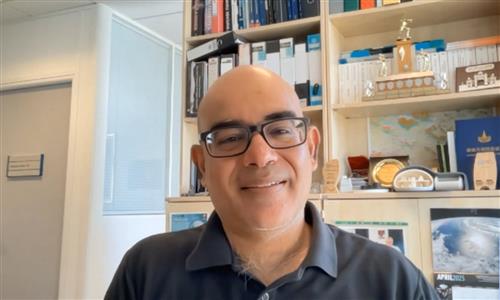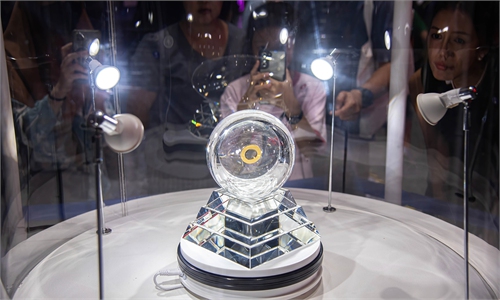Hong Kong Polytechnic University holds lunar base design competition, featuring lunar robot, energy saving

Photo: CFP
Hong Kong youths are contributing innovative ideas into China's lunar base design, as the Hong Kong Polytechnic University (PolyU) organized a space program themed "Pioneering the Moon: From Exploration to Base Construction." The winning teams proposed a multifunctional robot for complex lunar tasks, solar-powered energy-saving base, and robotic construction for fast and safe deployment, the Global Times learned from the university.
The program, which received more than 40 design proposals from students of 28 secondary schools and international schools in Hong Kong and the Greater Bay Area. It aims to cultivate young people's interest in aerospace technology and encourage their contributions to national space development, according to a statement sent from PolyU to the Global Times on Wednesday.
The Lunar Base Design Competition focused on three themes: Lunar Architecture and Energy, Lunar Robots, and Astronaut Health and Life Support.
Students were tasked with designing innovative lunar bases based on scientific research and data analysis. After an evaluation by a judging panel comprising PolyU aerospace experts and members of the Hong Kong Society of Astronautics, three winning teams were selected. They will receive prizes to encourage their continued participation in STEM education activities at schools, the university said in the statement.
The champion team from Pui Kiu College proposed a multifunctional lunar robot designed to assist astronauts with tasks such as sample collection and equipment maintenance. The robot enhances the efficiency and safety of lunar operations and supports exploration of shadowed regions on the Moon and the discovery of new resources and geological features.
The first runner-up team from ESF Sha Tin College designed a solar-powered lunar base using heliostats, potentially boosting energy efficiency by 67 percent, providing astronauts with a sustainable lunar living and working environment.
The second runner-up team from St. Paul's Convent School (Secondary Section) proposed a robotic construction base with a sustainable energy system. It enables full deployment using autonomous robots, allowing faster construction while reducing astronauts' exposure to harmful radiation.
An award ceremony was held on May 30 at the PolyU campus, with nearly 200 experts, students, teachers, and parents in attendance.
Wing-tak Wong, Deputy President and Provost of PolyU, said at the event that "PolyU is proud to be part of our nation's efforts to explore and understand the Moon and Mars through various Chang'e and Tianwen missions, leveraging cutting-edge research and engineering capabilities to make significant contributions to the development of Hong Kong, our nation, and the world."
Wong praised the innovative designs of the participating teams, noting that their dedication and creativity are vital to the future of space exploration.
Lunar exploration is shifting from short-term missions to long-term construction, from single-craft operations to multi-craft collaboration, and from national projects to international cooperation, Bian Zhigang, deputy director of the China National Space Administration (CNSA), noted at a conference held in Shanghai in April. The modes of exploration and cooperation are undergoing fundamental changes, he added.
To date, 17 countries and international organizations, as well as more than 50 international research institutions, have joined the China-initiated International Lunar Research Station (ILRS), Bian said.
PolyU has a strong research track record in space technology, with its researchers involved in several national space exploration projects, including Chang'e-3, 4, 5, 6, and Tianwen-1 missions.
Most recently, PolyU developed and manufactured space instruments for the China's Chang'e-6 mission, successfully completing the first lunar far side sampling in human history. The research team at PolyU collaborated with the China Academy of Space Technology (CAST) to develop and manufacture the "Surface Sampling and Packing System."


